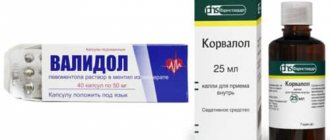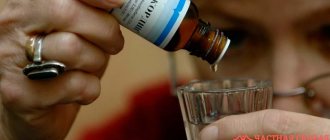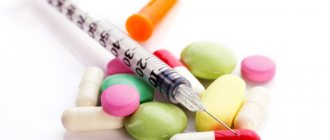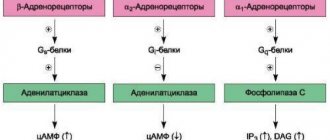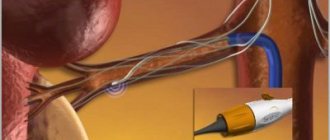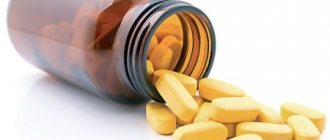Rational combinations of antihypertensive drugs
Lecture transcript
XXVI All-Russian Educational Internet Session for doctors
Total duration: 20:10
Oksana Mikhailovna Drapkina, executive director of the Internet Session, secretary of the interdepartmental council on therapy of the Russian Academy of Medical Sciences: - It is with great pleasure that I give the floor to Professor Maria Genrikhovna Glezer. "Rational combinations of antihypertensive drugs"
00:10
Glezer Maria Genrikhovna, Doctor of Medical Sciences:
– Dear colleagues. Arterial hypertension is currently the No. 1 risk factor. In 2010, it was recognized by the World Health Organization as the No. 1 killer. It is high blood pressure that determines more than 50% of all cases of coronary heart disease and strokes.
What are the classes of drugs for long-term treatment of arterial hypertension. 8 classes. But we must first use the first 5 classes:
- diuretics;
- beta blockers;
- ACE inhibitors;
- sartans;
- calcium channel blockers.
Alone or in combination, these drugs are used to reduce the risk of complications.
There is a sufficient evidence base for these first five drugs. These classes of drugs may reduce cardiovascular morbidity and death.
What are the main pathophysiological mechanisms involved in increased blood pressure?
This is the activation of the renin-angiotensin system. Activation of the sympathetic nervous system. Increase in circulating blood volumes (changes in water and electrolyte balance).
Ultimately, these systems will lead to changes in intracellular calcium transport. The drugs that we have affect different stages of pathogenesis.
Beta blockers, sympatholytics, imidazoline receptor agonists - for increased activity of the sympathetic nervous system. Diuretics – for increased circulating blood volume, lipid metabolism disorders. Calcium antagonists – to change intracellular calcium transport. 3 groups of drugs (inhibitors, sartans and direct renin inhibitors) - on the activated rhinin-angiotensin system.
We know well from clinical practice that all patients with arterial hypertension are different. The contribution of each pathogenetic mechanism may vary from person to person. For some, an increase in circulating blood volume prevails. Some people have predominantly increased activity of the renin-angiotensin system. Some people (especially young people) experience an increase in the activity of the sympathetic nervous system.
It is clear that it is most often impossible to solve the problem with one class of drugs.
02:34
Athena Study.
More than 2,000 women in the Russian Federation were analyzed. Where hypertension was controlled, 2-component, 3-component or more drugs were more often used to treat high blood pressure.
Where there was no control (in fact, this was the majority), either these patients were not treated at all, or monotherapy was used. This is further evidence that different classes of drugs need to be combined in order to achieve blood pressure goals.
Categories of patients most likely to require combination therapy:
- persons who have a significant increase in blood pressure (above 160/100 mm Hg);
- patients with diabetes mellitus (DM);
- people who have certain lesions of organ systems. For example, kidney damage;
- left ventricular hypertrophy (LVH);
- people who smoke, are obese, have sleep disordered breathing.
Combination therapy is the key to success in achieving the goal (based on the pathogenetic mechanisms that I have already mentioned and the complications that often occur in patients).
What do we call a goal? The best evidence to date is that the goal is to achieve target blood pressure values.
In September 2010, there were some changes to the target values. Now, regardless of the degree of risk, they try to keep the pressure below 140 and 130. Up to 140 mm Hg. Art. systolic and 90 – 80 mm Hg. Art. by diastolic.
Not a single large study (probably how they were structured) has proven that a decrease of less than 130 and 80 mm Hg. Art. provides an additional reduction in morbidity and mortality. At the same time, a decrease from 130 is a very difficult moment, requiring a lot of effort and financial costs.
In persons over 80 years of age, based on data from the HYVET study, target values for systolic pressure are set at less than 150 mmHg. Art. Low numbers remain with significant proteinuria.
05:04
A meta-analysis of 147 studies in older people aged 60–69 years showed that while one standard-dose drug reduces the risk of coronary heart disease by 25% and stroke by 35%, then a combination of three drugs at half the dosage reduces the risk of developing both coronary heart disease and stroke is almost twice as high.
A very interesting analysis was published in 2009. A 2-drug combination has been shown to be 5 times more effective in lowering systolic blood pressure (SBP) than doubling the dose of either drug class. Be it beta blockers, diuretics, inhibitors, calcium antagonists. This is proof that it is combination therapy that allows you to achieve the desired values.
In addition, combination therapy can undoubtedly lead to a faster, more pronounced reduction in blood pressure.
The VALUE study clearly showed: if during the first month from the start of treatment the pressure decreases by more than 10 mm Hg. Art., then the number of fatal/non-fatal cardiovascular events, strokes and death from all causes becomes significantly less than in those people who did not achieve a reduction during the first month.
06:29
The second point that you should pay attention to: you should still strive to achieve the target numbers within 6 months. This is less than 140 mmHg. Art. Then all outcomes, including fatal events, heart attacks, strokes, deaths from all causes, and hospitalization will be significantly lower.
In my opinion, how should the decision-making process proceed when treating patients with arterial hypertension.
Certainly. We can start with monotherapy. This ensures the safety of treatment for our patients. If you see a person for the first time and you do not know what the reaction will be to antihypertensive therapy, you can start with monotherapy.
But you don’t need to go further in this vicious circle: you reached the maximum increase in dose, you became convinced that it was ineffective, you changed the drug, and so on. Patients stop this treatment, they leave the doctor.
Correct decision-making process: Tried monotherapy. We realized that it was quite effective and safe, and switched to combination therapy. We are moving further along the path of increasing doses of combination drugs. This is the principle I preach.
Plus one: the patient came - the treatment was not effective enough - the next class of drugs was added. If something else doesn’t suit you, the next class is added. Then you will be more likely to succeed.
When it comes to combination therapy, they always say: “This is polypharmacy, it is bad for patients, and so on.” Correct, because combination therapy must undoubtedly be rational.
What is rational therapy? This is when the effectiveness of treatment increases, while the incidence of side effects decreases.
This can lead to an increase in efficiency. We use different classes of drugs, influence different parts of the pathogenesis of the disease and eliminate the activation of counter-regulatory systems. If you use drugs in smaller dosages, then dose-related side effects may, of course, be reduced.
The side effects of one of the components can be eliminated by using another component.
08:51
Recommended combinations of drugs for hypertension.
Diuretics plus inhibitors or sartans. Best time to use: Where there is a high risk of heart failure.
Beta blockers and dihydropyridine calcium antagonists. When is it best to use: for ischemic heart disease.
Metabolically neutral class of drugs, sartan inhibitors, calcium antagonists. In persons at high metabolic risk.
Today, this is probably how one can imagine rational combinations. It's a diuretic plus something. Anything – these are inhibitors or sartans.
Another type of combination. Calcium antagonists plus ACE inhibitor or calcium antagonists plus sartans. Dihydropyridine calcium antagonists are used with beta blockers in patients with coronary artery disease.
Currently, the combination of diuretics plus calcium antagonists is considered irrational because this combination almost doubles the risk of myocardial infarction. Diuretics plus beta blockers had the best effect in this case.
The final picture looks like this: 1) calcium antagonists plus inhibitors or sartans and 2) diuretics, inhibitors and sartans.
The slide shows the recommended combinations of antihypertensive drugs in a trapezoid.
This trapezoid is considered the most rational today.
I took the liberty of slightly modifying the picture shown in the European recommendations. I drew a triangle. At the top I put a group of drugs that inhibit the activity of the renin-angiotensin system (RAS) plus diuretics or plus calcium antagonists. Or the three of us together in the center of the class. There will be effective treatment.
What is the rationale for saying that a combination of diuretics, inhibitors or sartans is an effective and rational combination. It is known that diuretics and inhibitors (sartans) are powerful antihypertensive drugs with pronounced organoprotective properties that can reduce the incidence of morbidity and mortality in arterial hypertension (AH).
The enhancement of the hypotensive effect is due to the fact that conditions are created for the most pronounced action of both components. The activation of counter-regulatory mechanisms is eliminated: diuretics reduce sodium levels, thereby stimulating the production of renin. This leads to a more pronounced antihypertensive effect of drugs that inhibit the activity of the angiotensin system.
At the same time, inhibitors or sartans, by reducing the production of aldosterone, reduce the excretion of potassium from the body, which is always not good when prescribing diuretics. In addition, inhibitors and sartans have a beneficial effect on purine metabolism and reduce the severity of hyperuricemia.
11:50
The combination with diuretics allows you to achieve the same reduction in blood pressure 4 weeks earlier compared to monotherapy with any of the drugs. This leads to the fact that better treatment results can be achieved.
ACE inhibitors (in general, probably the same with sartans) are drugs with pronounced organotensive properties. They influence vascular remodeling, reducing or normalizing the ratio between the lumen of blood vessels and the intima-media complex. This is very important for persistently maintaining blood pressure at normal levels and avoiding crises. The data are given for one of the long-acting ACE inhibitors - the drug Lisinopril. In our country it is often used in the form of the drug “Diroton”. Normalization of the vascular ratio in arterial hypertension.
Indicators related to heart function improve. In particular, improving the diastolic function of the heart. The ratio of peak E to peak A returns to almost normal. The time of isovolumic relaxation improves, the diameter of cardiomyocytes decreases. It is very important that myocardial fibrosis is reduced in patients with arterial hypertension. This is one of the first steps to developing a particular form of heart failure. Heart failure, which is caused by hypertension with preserved ejection fraction.
13:27
ACE inhibitors are known to work very well in obesity because the activity of the renin-angiotensin system is increased in obesity. Each fat cell produces the angiotensin gene in an amount equal to 70 liver cells.
One of the first studies that was conducted demonstrated that lisinopril was effective in approximately 60 patients. Hydrochlorothiazide (HTC) is less effective. The most important thing is that this effect is detected at doses of “Lisinopril” of 10 mg, and “Hydrochlorothiazide” - 50 mg. The side effects of Hydrochlorothiazide may already be quite pronounced.
A very interesting study was conducted in Russia - the Desire study. This study showed that the use of lisinopril can normalize the abnormal daily blood pressure profile. In particular, Lisinopril in women halved the night-picker type when there is a sharp increase in blood pressure at night.
Another achievement that was shown in this study. The use of the drug in the evening allows to normalize blood pressure to a greater extent and reduce the disturbed profile. This is important because night-pickers have a higher incidence of strokes, adverse events, and so on.
Combination with diuretics. Diuretics are one of the most important classes of drugs for the treatment of arterial hypertension. Returning to the Athena study, I would like to say that the difference is in the prescription of drugs where it was ineffective: diuretics were used less often. All other classes were used approximately equally. If diuretics are not prescribed, then it is even difficult to say that something is effective or ineffective.
15:22
Two studies: UKPDS and LIFE. In the UKPDS study, the target blood pressure was 160/90 mmHg. Art. 60% of patients were already on diuretics. In the LIFE study, where the target numbers were 140/90 mmHg. Art. 90% of patients required diuretics.
In our country, the use of diuretics is somewhere around 30%. This is not a sufficient purpose. According to the LIFE study, people who received diuretic drugs had a 30-40% lower risk of various adverse events (cardiovascular death, heart attack, stroke), and a 45% lower overall mortality rate. This is a very important class of drugs that should be used in combination therapy.
I'll say it again. We can say that hypertension is resistant to treatment if a combination of three antihypertensive drugs prescribed in adequate dosages does not reduce blood pressure, but one of these drugs is a diuretic. Thus, this is a very important way to achieve target blood pressure values.
The use of ready-made combination forms is an easier path to success in treating patients with arterial hypertension.
Where hypertension was controlled, a higher percentage of cases used preformed combination dosage forms than in groups where there was no sufficient effect.
I want to show you one more study. Where a combination of Lisinopril and Hydrochlorothiazide was used (in our country, the drug Co-Diroton), patient adherence to treatment was higher than when Lisinopril and Hydrochlorothiazide were used in 2- x different tablets.
The creation of finished dosage forms follows the path of rational combinations, that is, a diuretic plus an ACE inhibitor, or a diuretic plus sartan. Or a combination based on calcium antagonists, to which inhibitors, sartans or beta blockers are added in the treatment of patients with coronary heart disease.
Now a drug has been released that contains a combination of 3 groups. This is Amlodipine plus Valsartan plus Hydrochlorothiazide. This is the right direction: when you have selected certain dosages, then you can already use ready-made combined forms.
In a nutshell about the combination of calcium antagonists with inhibitors or sartans. Calcium antagonists are good at reducing the risk of stroke, inhibitors are good at reducing the risk of myocardial infarction. This provides a reduction in the risk of major cardiovascular events.
18:14
Advantages and disadvantages of mono- and combination therapy for arterial hypertension.
Of course, if you use combination therapy, there is always a higher response rate. This is a very high possibility of dose titration, because you can take a quarter of a tablet from one package, a full tablet from another, and so on. The incidence of side effects is lower if we use rational combinations.
But it becomes difficult to accept. Patients with hypertension will not use anything that is complicated. As soon as the necessary dosages have been selected, you need to switch to fixed combinations, which has an advantage in absolutely all positions.
In conclusion, I want to say what rational combination antihypertensive therapy is. This is an impact on different parts of the pathogenesis of hypertension and elimination of the activation of counter-regulatory mechanisms. Based on this, the effectiveness of treatment increases. When it is effective, people will be more committed (commitment increases).
A good combination is a decrease in the frequency of side effects - which means an increase in adherence. Increasing adherence means increasing the effectiveness of treatment.
Let's look at the second part of this circle. Increasing efficiency, increasing adherence means decreasing cost. Any change in therapy entails, of course, an increase in the cost of treatment. And when it’s not so expensive, people will be more committed. They will better follow the doctor's orders. You should always think about this.
Thank you for your attention.
Oksana Drapkina: Thank you very much, Maria Genrikhovna.
Vitamins for the heart and blood vessels
A strong heart and strong blood vessels are the key to a long and fulfilling life. Young people pay little attention to the state of their cardiovascular system and only grab their heads when illness strikes. The human heart copes with incredible stress every day. Due to the frantic pace of life, stress, and poor nutrition, the circulatory system is weakened and filled with waste and toxic substances. Vitamins for the heart and blood vessels are needed not only by the elderly, but also by young people. Taking vitamin supplements is a sure way to maintain health and prolong life.
Causes of heart pathologies
According to statistics, heart disease is one of the leaders among human pathologies in terms of disability and mortality. Why are modern people of all ages prone to cardiovascular diseases? The main culprit is an incorrect lifestyle. Representatives of today's youth move little, eat poorly, are often nervous, worried, exposed to stress, chasing success, forgetting about rest. And lack of sleep and excessive stress are the main enemies of the heart. Cardiac pathologies occur as a result of exposure to the following factors:
- high blood pressure;
- obesity;
- sedentary lifestyle;
- bad habits;
- constant stress;
- genetic predisposition;
- lack of vitamins and microelements in the body.
Vitamins and biologically active substances necessary for the heart
In order for the heart to remain healthy, the body must receive optimal amounts of vitamins and microelements. Listed below are the vitamins most essential for the normal functioning of the heart muscle.
- Retinol or vitamin A. A fat-soluble substance that stimulates metabolism and prevents the development of atherosclerosis. Fish oil, milk, and carrots are rich in retinol. Pharmacies sell retinol acetate, a solution for oral administration.
- Ascorbic acid or vitamin C. A water-soluble substance that activates metabolism, destroys bad cholesterol, and strengthens the heart muscle. The vitamin is found in large quantities mainly in plant foods: rose hips, citrus fruits, currants, bell peppers. Ascorbic acid can be used in injections, tablets and dissolving pills.
- Tocopherol or vitamin E. Prevents the oxidation of fats and the formation of free radicals that destroy the tissue of the heart muscle and blood vessels. It is present in significant quantities in liver, nuts, and vegetable oil. The vitamin can be purchased at the pharmacy in capsule form or as a solution.
- Rutin or vitamin P. A water-soluble substance that strengthens the walls of blood vessels, used for pathological bleeding. Citrus fruits, apples, and rose hips are rich in vitamins. In pharmacies, rutin is sold in tablet form.
- Thiamine or vitamin B1. A water-soluble substance necessary for proper contraction of the heart muscle. Cereal porridges contain the most thiamine. To eliminate the deficiency of this vitamin in the body, injections are usually prescribed.
- Pyridoxine or vitamin B6. Destroys harmful cholesterol, normalizes the functioning of blood vessels in the nose, eyes, brain, and activates lipid metabolism. It is present in significant quantities in meat, fish, legumes, and milk. Typically used as pyridoxine hydrochloride injections.
- Vitamin F. Vitamin-like compounds are polyunsaturated fatty acids. Prevents the formation of cholesterol plaques in blood vessels. Fish oil, vegetable oils, fish and seafood are rich in fatty acids.
- Coenzyme Q10. An enzyme that is synthesized in the human liver with sufficient intake of plant and animal products. With a deficiency of the substance, the likelihood of myocardial infarction increases, and the body rapidly ages.
Heart-essential minerals
Certain minerals have a positive effect on the functioning of the circulatory system. Below is a list of the most important minerals for the heart.
- Calcium. Regulates the frequency of contractions of the heart muscle, strengthens the walls of arteries and veins. It is found in significant quantities in fish and dairy products.
- Potassium. Controls nerve impulses that cause the heart muscle to contract. It is present in high concentrations in nuts, dried fruits, potatoes, and cabbage.
- Magnesium. Improves metabolism in cardiac tissues, prevents the formation of blood clots. It is found in large quantities in meat, legumes, and fish.
- Phosphorus. Participates in the formation of cell membranes. Regulates muscle contractions and nerve signal transmission. It is present in significant quantities in bran bread, green beans, and dried fruits.
Vitamins beneficial for brain vessels
Due to poor blood circulation in the brain, strokes often occur. And after a stroke, a person experiences problems with memory, visual and speech function. For your brain to function properly, you need to take vitamins regularly. Below is a list of substances important for the blood vessels of the brain.
- Thiamine or vitamin B1. Improves memory, helps to absorb information faster. Vitamin deficiency causes insomnia, frequent fatigue, problems with coordination of movements, and depression. To replenish thiamine in the body, you should eat fish, meat, nuts, eggs, and oatmeal.
- Riboflavin or vitamin B2. Provides brain tissue with energy, helps cope with high intellectual and physical stress. If there is a lack of the substance, a person becomes drowsy and distracted, his appetite worsens and headaches occur. Meat and dairy products are rich in vitamins.
- Nicotinic acid or vitamin B3. Stimulates energy synthesis in the body, normalizes the functioning of blood vessels in the eyes, nose and brain. It is present in large quantities in liver, meat, legumes, fish, nuts, and eggs.
- Pantothenic acid or vitamin B5. Controls the transmission of nerve impulses and supports mental performance. With a deficiency of the substance, depression, insomnia, and chronic fatigue are noted. Milk, liver, and cabbage are rich in vitamins.
- Pyridoxine or vitamin B6. Restores nerves, strengthens brain vessels. With a lack of the substance, a person becomes hot-tempered and anxious, he experiences depression and sleep disturbances. The vitamin is present in significant concentrations in cereals, liver, legumes, and nuts.
- Folic acid or vitamin B9. Improves thinking ability. With vitamin deficiency, memory deteriorates, apathy and weakness are noted. The substance is rich in nuts, cereals, mushrooms, meat, and fresh plant products.
- Cyanocobalamin or vitamin B12. Regulates the change in phases of sleep and wakefulness, increases brain activity. With a lack of the substance, depression, tinnitus, decreased intellectual abilities, nervousness, visual and memory impairment are noted. The vitamin is present only in animal foods and some algae.
Strengthening the blood vessels of the extremities
The main problem of the blood vessels of the legs is varicose veins. This is an extremely unpleasant disease, in its advanced form manifested by swelling of the knees, legs and feet, inflammation and darkening of the skin of the lower extremities.
To strengthen the blood vessels of the arms and legs, it is necessary to take vitamin complexes supplemented with iron, zinc and calcium. Elimination of varicose veins is carried out through complex therapy. The doctor prescribes therapeutic exercises, physiotherapeutic and water procedures, and medications to the patient. A sick person should not stand or sit in one position for a long time, consume a lot of salt, coffee, black tea, and alcohol. To successfully get rid of the disease, you must adhere to a diet and monitor your body weight.
Strengthening eye blood vessels
If the eyes hurt and hurt, and blood streaks are noticeable on their surface, then we can talk about weakening of the eye vessels. The blood vessels of the eyes are weakened under the influence of the following factors:
- allergies;
- long periods of time at the computer;
- bright sun and harsh wind;
- insomnia;
- changes in blood pressure;
- intense physical activity.
To prevent blood vessels in the eyes from bursting, it is necessary to take B vitamins and ascorbic acid. For severe vascular pathologies of the eyes, it is recommended to administer rutin intramuscularly. Fresh fruits and vegetables, green or rosehip tea are beneficial.
Products to strengthen blood vessels and improve heart function
To keep your cardiovascular system healthy, you need to include the following foods in your diet.
- Olive oil. A high-quality first-press product is rich in unsaturated fats and antioxidants, which cleanse blood vessels of harmful accumulations. With regular consumption of olive oil, the concentration of bad cholesterol in the blood is greatly reduced.
- Dried apricots. Dried apricots contain large quantities of natural antioxidants that protect heart cells from toxins and breakdown products. Dried apricots contain potassium, which prevents the development of a heart attack.
- Fish. Rich in substances that strengthen the walls of blood vessels. Useful for arrhythmia.
- Nuts. They contain arginine, an amino acid that has a beneficial effect on the heart. Regular consumption of nuts significantly reduces the likelihood of a heart attack.
- Dark chocolate . A high-quality product contains flavonoids - pigments that dilate blood vessels, helping to eliminate hypertension. It should be noted that chocolate has no effect on people with low blood pressure.
- Grape. Contains significant amounts of antioxidants and heart vitamins. High-quality grape wines also contain antioxidants. However, you should not abuse alcoholic beverages, otherwise the harm will outweigh the benefits.
Who is recommended to take vitamins for blood vessels and heart?
Many people begin to take care of the circulatory system only when it becomes ill. By supporting and protecting the heart and blood vessels, you can not only cure dangerous pathologies, but also prevent their occurrence. Which groups of people need vitamins for the heart and blood vessels?
- Patients suffering from vascular diseases of the brain and limbs.
- Athletes.
- Children and teenagers.
- People over 50 years old.
- Patients who have undergone heart surgery.
- People doing heavy physical work.
- People working in hazardous workplaces.
People belonging to the categories listed above should definitely contact a cardiologist. The doctor will select the optimal complex of vitamins and minerals. The dosage of the drug and the duration of the therapeutic course are determined by the medical specialist, focusing on the age and well-being of the patient.
Be healthy!
Doctor-hygienist
Gapanovich Valentina,


